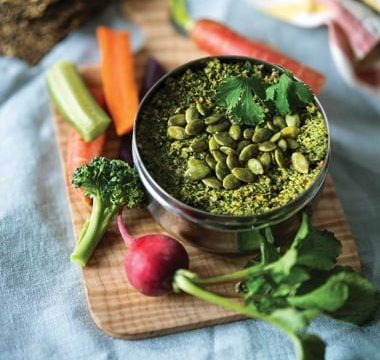The 31st chapter of Uttara Sthanam of Ashtanga Hridayam is named as ‘Kshudra Roga Vijnaniya’. This chapter deals with the explanation of ‘Knowledge of minor diseases.
The topics covered in this chapter include –
- Ajagallika
- Yavaprakhya
- Kacchapi
- Panasika
- Pashana Gardabha
- Mukhadushika
- Padmakantaka
- Vivrita
- Masurika
- Visphota
- Viddha
- Gardabhi
- Kaksha
- Gandhanama
- Rajika
- Jala Gardabha
- Agnirohini
- Irivellika
- Vidari
- Sharkararbuda
- Valmika
- Kadara
- Ruddhaguda
- Chipya
- Kunakha
- Alasa
- Tilakalaka and Mashaka
- Charmakila
- Jatumani and Lancchana
- Vyanga Nilika
- Prasupti
- Utkotha and Kotha
Pledge by the author(s)
अथात: क्षुद्ररोगविज्ञानीयं व्याख्यास्याम: ।
इति ह स्माहुरात्रेयादयो महर्षय: ।
athāta: kṣudraroga vijñānīyaṃ vyākhyāsyāma: – After having offered prayers to the God, henceforth we are going to explain the chapter pertaining to the explanation of ‘Knowledge of minor diseases.
iti ha smāhu: ātreyādayo maharṣaya: – Thus, say (pledge) Atreya and other sages.
Ajagallika
स्निग्धा सवर्णा ग्रथिता नीरुजा मुद्गसन्निभा ।
पिटिका कफवाताभ्यां बालानामजगल्लिका ॥ १ ॥
Eruptions which are greasy / unctuous, of the same color as of the skin, knotty, painless, resembling Vigna mungo, caused by Kapha and Vata together and seen in children is known as Ajagallika.
Yavaprakhya
यवप्रख्या यवप्रख्या ताभ्यां मांसाश्रिता घना ।
By them (Vata and Kapha together) is caused Yavaprakhya (pitika / eruption), resembling a barley grain, localized in the muscle and hard.
Kacchapi
अवक्त्रा चालजी वृत्ता स्तोकपूया घनोन्नता ॥ २ ॥
ग्रन्थयः पञ्च वा षड्वा कच्छपी कच्छपोन्नताः ।
Granthi (tumor/nodules) five or six, having no mouth (opening) circular like the patch of Alaji, filled with very little pus, thick, elevated similar to the elevated shell of a tortoise is called Kacchapi.
Panasika
कर्णस्योर्ध्वं समन्ताद्वा पिटिका कठिनोग्ररुक् ॥ ३ ॥
शालूकाभा पनसिका
Eruption either above or around the ear, hard, with severe pain and resembling the lotus stalk is known as Panasika.
Pashana gardabha
शोफस्त्वल्परुजः स्थिरः ।
हनुसन्धिसमुद्भूतस्ताभ्यां पाषाणगर्दभः ॥ ४ ॥
Swelling appearing at the joining place of the lower jaw, having mild pain and static (non-moving), produced by them (Vata- Kapha together) is Pashana gardabha.
Mukhadushika
शाल्मलीकण्टकाकाराः पिटिकाः सरुजो घनाः ।
मेदोगर्भा मुखे यूनां ताभ्यां च मुखदूषिकाः ॥ ५ ॥
Eruptions resembling the thorns of Salmalia malabarica tree, painful, thick, containing fat inside, appearing on the face of youths, produced by them (Vata-Kapha) is Mukhadushika.
Padmakantaka
ते पद्मकण्टका ज्ञेया यैः पद्ममिव कण्टकैः ।
चीयते नीरुजैः श्वेतैः शरीरं कफवातजैः ॥ ६ ॥
Those thorns like pitaka which are painless, white in color and spread all over the body like thorn of the lotus and caused by Kapha and Vata are known as Padmakantaka.
Vivrita
पित्तेन पिटिका वृत्ता पक्वोदुम्बरसन्निभा ।
महादाहज्वरकरी विवृता विवृतानना ॥ ७ ॥
Eruptions produced by Pitta, round, resembling a ripe fruit of udumbara - Ficus racemosa, producing severe burning sensation and fever and having a wide-open mouth is known as Vivrita.
Masurika
गात्रेष्वन्तश्च वक्त्रस्य दाहज्वररुजान्विताः ।
Eruption is hard, resembling the (lentil)-Lens culinaris in size and color, accompanied with burning sensation, fever and pain appearing on different parts of the body and interior of the mouth; this is called Masurika.
Visphota
ततः कष्टतराः स्फोटा विस्फोटाख्या महारुजाः ।
tataḥ sphoṭā – Vesicles/Blebs more difficult to bear (than Masurika), having severe pain is known as Visphota.
Viddha
या पद्मकर्णिकाकारा पिटिका पिटिकाचिता ॥ ९ ॥
सा विद्धा वातपित्ताभ्यां
Eruptions with shape resembling the bulbs of the lotus flowers – Nelumbo nucifera, studded with small eruptions all around and caused by Vata and Pitta together is known as Viddha.
Gardabhi
ताभ्यामेव च गर्दभी ।
मण्डला विपुलोत्सन्ना सरागपिटिकाचिता ॥ १० ॥
Gardabhi is also from these (Vata-Pitta) only, it is circular, wide, raised, slightly reddish patch studded with small eruptions.
Kaksha
कक्षेति कक्षासन्नेषु प्रायो देशेषु सानिलात् ।
पित्ताद्भवन्ति पिटिकाः सूक्ष्मा लाजोपमा घनाः ॥११॥
Eruptions generally appearing around the axilla, caused by Vata, which are small eruptions, resembling laja (fried paddy) and which are hard caused by Pitta, probably caused in the same region (axilla) is known as Kaksha.
Gandhanama
तादृशी महती त्वेका गन्धनामेति कीर्तिता ।
Similarly, a solitary eruption big in size, is known as Gandhanama.
Rajika
घर्मस्वेदपरीतेऽङ्गे पिटिकाः सरुजो घनाः ॥ १२ ॥
राजीकावर्णसंस्थानप्रमाणा राजिकाह्वयाः ।
Eruptions which are painful, hard, resembling (mustard seed) – Brassica nigra in color, shape and size developing on the body, contaminated with sweat due to great heat, is known as Rajika.
Jala Gardabha
दोषैः पित्तोल्बणैर्मन्दैर्विसर्पति विसर्पवत् ॥ १३ ॥
शोफोऽपाकस्तनुस्ताम्रो ज्वरकृज्जालगर्दभः ।
Swelling caused by all the doshas, with the predominance of Pitta, spreading from place to place slowly like herpes, not undergoing suppuration/ ulceration, thin, coppery in color and producing fever is known as Jala Gardabha.
Agnirohini
मलैः पित्तोल्बणैः स्फोटा ज्वरिणो मांसदारणाः ॥१४॥ कक्षाभागेषु जायन्ते येऽग्न्याभाः साग्निरोहिणी ।
पञ्चाहात्सप्तरात्राद्वा पक्षाद्वा हन्ति जीवितम् ॥१५॥
Sphoṭā malaiḥ – Vesicles/Blebs caused by the doshas of which Pitta is predominant, accompanied with fever and causes destruction of muscles, appearing in the axilla, resembling fire (in effects); kills the person either in five days, seven days or fifteen days. This is known as Agnirohini.
Irivellika
त्रिलिङ्गा पिटिका वृत्ता जत्रूर्ध्वमिरिवेल्लिका ।
Irivellika are eruptions having features of all the three doshas, round in shape and appearing in parts above the shoulders.
Vidari
विदारीकन्दकठिना विदारी कक्षवङ्क्षणे ॥ १६ ॥
Vidari is eruption hard like tuber of Pueraria tuberosa and appears in the axilla and groins.
Sharkararbuda
मेदोऽनिलकफैर्ग्रन्थिः स्नायुमांससिराश्रयैः ।
भिन्नो वसाज्यमध्वाभं स्रवेत्तत्रोल्बणोऽनिलः ॥ १७
मांसं विशोष्य ग्रथितां शर्करां उपपादयेत् ।
दुर्गन्धं रुधिरं क्लिन्नं नानावर्णं ततो मलाः ॥ १८ ॥
तां स्रावयन्ति निचितां विद्यात्तच्छर्करार्बुदम् ।
Tumor caused by fat, Vata, and Kapha, involving tendons, muscles, veins etc. exudes fluid resembling muscle-fat, ghee, and honey when pricked; Vata getting aggravated by it, dries up the muscles and converts them into matted gravel-like substance, then the doshas exude blood which is foul smelling, rotten, of many colors, out of the accumulated gravel. This disease is known as Sharkarabuda.
Valmika
पाणिपादतले सन्धौ जत्रूर्ध्वं वोपचीयते ॥१९॥
वल्मीकवच्छनैर्ग्रन्थिस्तद्वद्बह्वणुभिर्मुखैः ।
रुग्दाहकण्डूक्लेदाढ्यैर्वल्मीकोऽसौ समस्तजः ॥२०॥ Tumor appearing in the palms and soles, joints or parts of body above the collar bone, developing slowly like the ant-hill, having small and large openings (orifice) like it, accompanied with pain, burning sensation, itching and copious exudation, is known as Valmika and is caused by all the doshas together.
Kadara
शर्करोन्मथिते पादे क्षते वा कण्टकादिभिः ।
ग्रन्थिः कीलवदुत्सन्नो जायते कदरं तु तत् ॥ २१ ॥
The tumor which is rising and developing in the form of a nail, caused due to the feet being rubbed by gravel or the foot being injured by thorns etc. is known as Kadara.
Ruddhaguda
वेगसन्धारणाद्वायुरपानोऽपानसंश्रयम् ।
अणूकरोति बाह्यान्तर्मार्गमस्य ततः शकृत् ॥ २२ ॥
कृच्छ्रान्निर्गच्छति व्याधिरयं रुद्धगुदो मतः ।
Apana Vata (division of Vata) getting aggravated by suppression of urges (of feces, flatus etc.), makes the passage of the feces constricted from outside as well as inside; then the fecal matter moves out with difficulty; this disease is known as Ruddhaguda.
Chipya
कुर्यात्पित्तानिलं पाकं नखमांसे सरुग्ज्वरम् ॥ २३ ॥
चिप्यमक्षतरोगं च विद्यादुपनखं च तम् ।
Pitta and Vata bring about suppuration of the muscle of the nail associated with pain and fever this is known as Chipya, Akshatha Roga and Upanakha.
Kunakha
कृष्णोऽभिघाताद्रूक्षश्च खरश्च कुनखो नखः ॥ २४ ॥
The nail becomes black, dry and rough due to injury. This is Kunakha.
Alasa
दुष्टकर्दमसंस्पर्शात्कण्डूक्लेदान्वितान्तराः ।
अङ्गुल्योऽलसमित्याहु
By (constant) contact with bad slush, the space in between the toes develops itching and exudation, this is called Alasa.
Tilakalaka and Mashaka
स्तिलाभांस्तिलकालकान् ॥ २५ ॥
कृष्णानवेदनांस्त्वक्स्थान् माषांस्तान् एव चोन्नतान् ।
Black, painless, sprouts (moles) on the skin resembling tila (sesame seed) – Sesamum indicum are known as Tilakalaka; these only are known as Mashaka when they are raised.
Charmakila
मषेभ्यस्तून्नततरांश्चर्मकीलान् सितासितान् ॥ २६ ॥
More projecting than Mashaka is Charmakila (warts), which may be either white or black.
Jatumani and Lancchana
तथाविधो जतुमणिः सहजो लोहितस्तु सः ।
कृष्णं सितं वा सहजं मण्डलं लाञ्छनं समम् ॥२७॥
Jatumani is of the same type, is congenital and red in color; Lancchana is black or white, congenital, pigmented patch of the same level of the skin.
Vyanga Nilika
शोकक्रोधादिकुपिताद्वातपित्तान्मुखे तनु ।
श्यामलं मण्डलं व्यङ्गं वक्त्रादन्यत्र नीलिका ॥२८॥
परुषं परुषस्पर्शं व्यङ्गं श्यावं च मारुतात् ।
पित्तात्ताम्रान्तमानीलं श्वेतान्तं कण्डुमत्कफात् ॥२९॥
रक्ताद्रक्तान्तमाताम्रं सौषं चिमिचिमायते ।
Vata and Pitta getting aggravated (increased) together due to grief, anger etc. produce light blue-black colored patch on the face this is known as Vyanga; if on other places other than face, it is known as Nilika. In that predominant of Vata, Vyanga is rough, coarse on touching and blue; with Pitta it is blue it is white at its edges and due to Kapha it is itching; with blood predominance, it is red inside and coppery, having burning sensation and tingling.
Prasupti
वायुनोदीरितः श्लेष्मा त्वचं प्राप्य विशुष्यति ॥३०॥
ततस्त्वग्जायते पाण्डु: क्रमेण च विचेतना ।
अल्पकण्डूरविक्लेदा सा प्रसुप्तिः प्रसुप्तितः ॥३१॥
Kapha aggravated by Vata, reaching the skin gets dried up greatly, then the skin gradually becomes pale, loses its sensation, with little or no itching and moistness.This disease is called Prasupti, due to presence of loss of sensation.
Utkotha and Kotha
असम्यग्वमनोदीर्णपित्तश्लेष्मान्ननिग्रहैः ।
मण्डलान्यतिकण्डूनि रागवन्ति बहूनि च ॥ ३२ ॥
उत्कोठः सोऽनुबद्धस्तु कोठ इत्यभिधीयते ।
Pitta and Kapha, aggravated by inadequate bouts of emesis therapy and suppression of (avoidance) of food, produce multiple patches (rashes) of red color, greatly itching on the skin. This is known as Utkotha. These joined to one another become a disease, known as Kotha.
Importance of knowledge of kshudraroga
प्रोक्ताः षट्त्रिंशदित्येते क्षुद्ररोगा विभागशः ॥ ३३ ॥
यानविज्ञाय मुह्येत चिकित्सायां चिकित्सकः ॥ ३३+॥
Thus, thirty-six minor diseases were classified. Without knowing these, the physician will stumble in treatment.
इति श्री वैद्यपति सिंहगुप्तसूनु श्रीमद्वाग्भटविरचितायामष्टाङ्गहृदयसंहितायां षष्ठे उत्तरस्थाने क्षुद्ररोगविज्ञानीयो नामैकत्रिंशोऽध्याय: ॥३१॥:
Thus, ends the chapter-Kshudraroga Vijnaniya- the thirtyfirst in Uttarasthana of Astanga Hridaya Samhita, composed by Srimad Vagbhata, son of Sri Vaidyapati Simhagupta.













